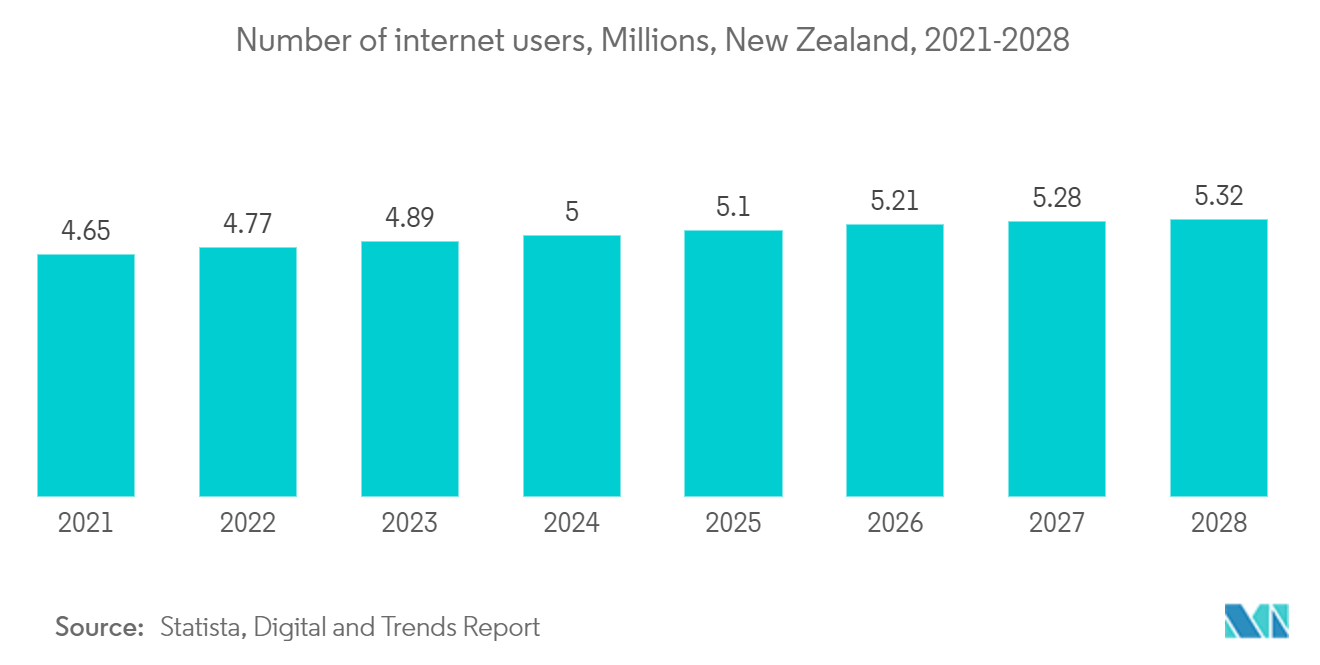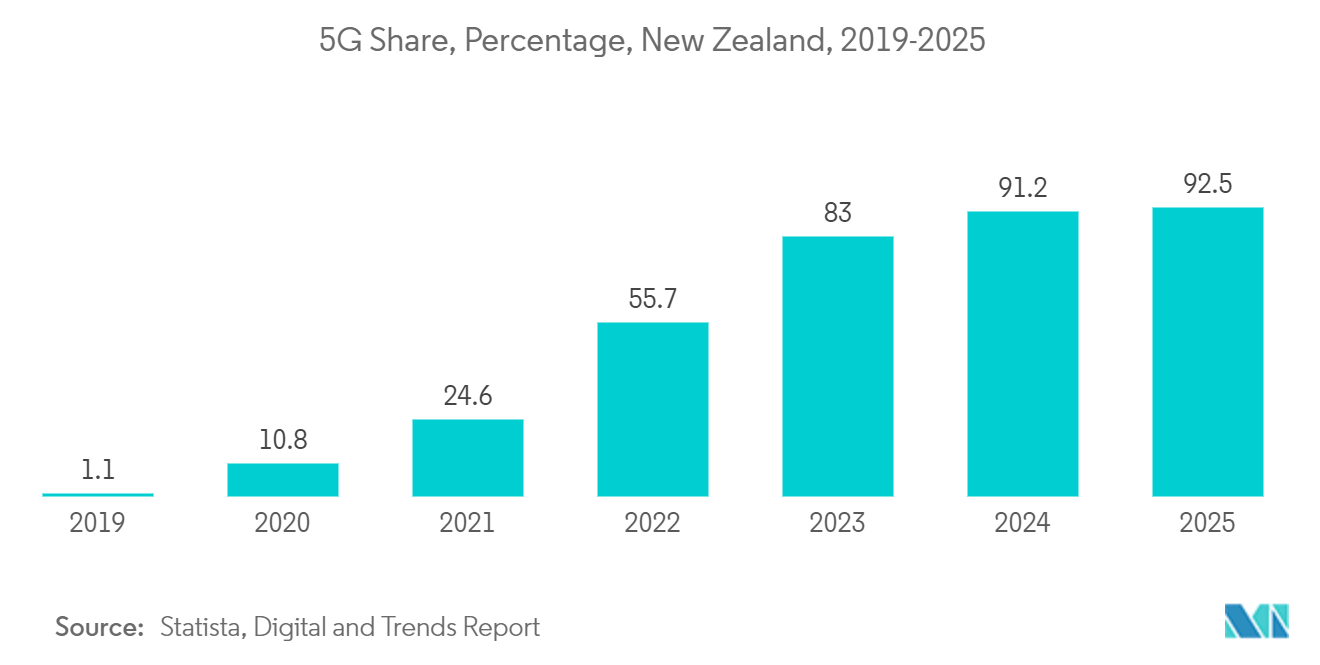Market Trends of New Zealand Data Center Physical Security Industry
Video Surveillance Segment Holds Significant Share
- Since sensitive and important data is stored in data centers, security is a top priority. Data center operators use video surveillance systems to ensure security standards and regulations are met. This allows operators to monitor access, detect unauthorized access, and maintain compliance.
- Video surveillance serves as a cost-effective solution to prevent physical attacks and unauthorized access to critical data, reducing the risk of data breaches and leaks. Cameras are installed at entrances and exits, allowing security personnel to easily identify and track the source of unauthorized access or damage to servers.
- Smartphone connectivity in the country has been steadily and slightly increasing over the years. The number of smartphone users is expected to increase from 6.48 million in 2022 to 7.1 million in 2029. Between January 2020 and January 2021, the number of mobile connections in New Zealand increased by 78,000 (+1.2%). In January 2021, the number of mobile connections in New Zealand was equivalent to 135.6% of the total population. The majority of New Zealanders own a smartphone. In 2022, smartphone penetration in the country was expected to be around 92%. In 2021, post-paid mobile phone connections accounted for the country's vast majority of mobile subscriptions. This signifies the increase in data traffic, which drives the increase in data centers and the demand for video surveillance that can help prevent malicious or erroneous operations. Video surveillance also provides evidence to identify responsible parties when an incident occurs.
- New Zealand witnessed increased speeds of 4G and 5G over the years, peaking at 66 Mbps and 431 Mbps by 2029, respectively. The country officially launched 5G in 2019 and witnessed an average speed of 159.47 Mbps. New Zealanders require large amounts of data for everyday living, from communicating via social media platforms to purchasing goods online and for entertainment. The growth of the telecom industry is driving the increase in data centers, increasing the need for video surveillance that also acts as a powerful deterrent, reducing the chances of physical attacks and unauthorized access to critical data.

IT & Telecommunication Segment Holds Major Share
- ICT is key to the New Zealand government's strategy to foster innovation and local production. Collaboration between banks, the ICT industry, and the New Zealand government has created an atmosphere of community and information sharing. Notably, New Zealand startups saw a significant increase in deals and investment, with a 63% increase in total spend from 2020 to 2021.
- New Zealand is easing border restrictions on ICT professionals in a bid to attract the largest digital talent pool from around the world to the island nation. At the forefront of these border exclusions is NZTech, a government-funded marketing organization set up to promote New Zealand technology to global markets. As the company's CEO acknowledged, as New Zealand's digital economy grows, the country needs more tech workers. In addition, the country is likely to see even greater demand for skilled workers in the technology industry.
- The market witnessed increasing investments from large corporations. Microsoft, the hyperscale operator, announced the opening of cloud regions in 2022. AWS announced the AWS Asia-Pacific (Auckland) Cloud Region, which is expected to go live in 2024.
- Telecommunications methods have changed over the years, and New Zealanders need reliable telecommunications services for many aspects of their daily lives. The proportion of active internet users has increased overall, which is in line with global trends, supporting the country's ongoing digital transition. The Ultra-Fast Broadband Initiative was a New Zealand government program to build a fiber optic network to cover 87% of the population by the end of 2022. It is a public-private partnership between the government and four companies, with a total government investment of NZD 1.7 billion (USD 10.19 billion).
- Fixed broadband subscribers are expected to increase due to an increase in households and a decrease in the number of underserved facilities that were previously unconnected. This drives the adoption of data centers in the telecom industry in the country.


